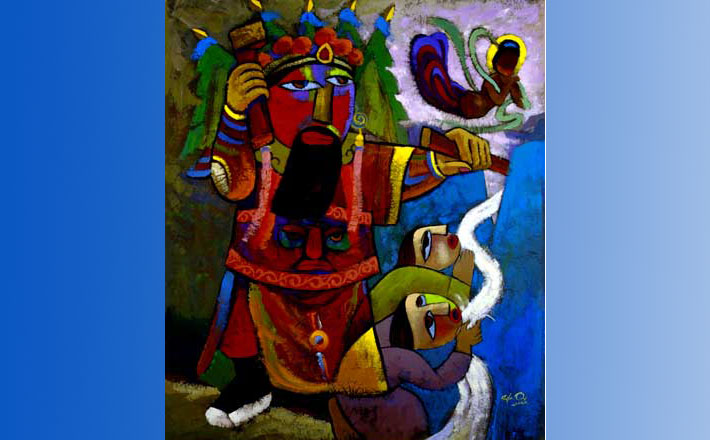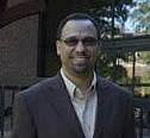Commentary on Matthew 21:23-32
What actually happened at the temple when Jesus entered Jerusalem? Why was the Jerusalem leadership so disturbed by Jesus’ actions and words? Was this the turning point in Jesus’ overall mission?
Many biblical scholars think this was the point in Jesus’ undertaking when the Temple leaders had sufficient evidence for the provocative nature of the prophet from Galilee, whose actions and words were, up until this point, unclear in terms of Jesus’ overall objective. His actions at the temple and the positive acknowledgement of the children, in particular, finally raised their ire. A lot becomes clearer in this account when the religious leadership questioned the origins of Jesus’ authority.
Prior to our passage, the narrative provided an important episode to help interpreters understand the rising, significant tension between Jesus and the Jerusalem leadership. In this prior scene, the day following Jesus’ activity in the temple area, Jesus cursed a fig tree (cf. 21:18-22). Even though Jesus turned this odd action into a lesson about faith for his disciples, the “fig tree” was understood as a significant symbol as well.
In fact, Mark sandwiched the temple event with the fig tree story (cf. Mark 11:12-14 and 11:20-26); Matthew omitted Mark’s narrative technique and only included the segment following Jesus’ temple action. Yet, Matthew’s narrative connection still seems clear. The cursing of the fig tree had something to do with Jesus’ actions in the temple precincts.
In the tradition, a cursed “fig tree” symbolized judgment on the people of Israel (cf. Jeremiah 8:13; 29:17; Hosea 2:12; 9:10). In the immediate narrative context, however, the critique appeared to be directed at the leaders of the temple specifically (cf. Matthew 21:15, 23), not against the people as a whole. In fact, the crowds encountered Jesus’ activity favorably, as the children attested (21:15).
It was the children’s song that caused the leadership to get angry, because their words (i.e., “Hosanna to the son of David”) linked messianic tunes to Jesus’ actions. This would cause alarm since the Jerusalem leadership would not want trouble from Rome. Also, Jesus parables, in response to the query about his authority, were directed at the “chief priests and the Pharisees” (cf. 21:45).
In addition, Jesus’ return to the temple to teach, on the following morning, suggested that neither his temple challenge nor the cursing of the fig tree intended to symbolize a destruction of the temple or its practices. Rather, Jesus desired to restore the temple to its proper function. [Some scholars would suggest that Matthew’s literary structure, when compared to Mark’s, may actually distance the association of the fig tree from the temple, its leadership, or the people Israel altogether.]
On the origins of Jesus’ authority, the central concern of our passage, the key to Jesus’ response was his association with John the Baptist (21:24-27). By using John’s baptism as a counter-question, Jesus indirectly correlated his “authority” with John’s own, something he had earlier alluded to as well (cf. 11:7-19).
Plus, Jesus participated directly in the baptizing program of John (cf. 3:1-17), despite John’s apparent reluctance (cf. 3:14-15). Their rejection of Jesus was simply an on-going denunciation of the prophetic tradition of John, of which Jesus was a central figure (cf. 21:32). But, since they did not answer his query directly, Jesus refused to answer theirs.
The issue of “authority” (verse 23) has been a theme in the Gospel of Matthew from the beginning (cf. 7:29; 9:6, 8) and acknowledgement of Jesus’ authority (from God) will be crucial for an effective discipleship follow-up program: “All authority in heaven and on earth has been given to me. Go therefore and make disciples of all nations…” (28:18-19). A rejection of John’s and Jesus’s authority may also be a future sign for the general reaction of the discipleship program in Jesus’ name.
Jesus’ second (indirect?) response to the query of the temple leadership was to tell a parable, traditionally called the “Parable of the Two Sons” (Matthew 21:28-32). This story was unique to the first canonical Gospel. In this particular case, Jesus provided an allegorical equivalent for the two “sons”: the tax-collectors and prostitutes, on the one hand, and the chief priests and elders, on the other hand.
Jesus considered both groups of people God’s children. But their actions, not their words, determined the true children, that is, the ones most willing to participate in the father’s business. In the allegory, Jesus equated involvement in the father’s vineyard with recognition of John’s baptism as a sign of God’s authority. Finally, to do God’s will was to put a disciple in close association with Jesus (12:50; cf. 7:21).
One note about the “tax-collector” is in order. Culturally, they function more like toll-collectors at city gates or on prominent roadways collecting the “tax” of traders bringing external goods into the city. The general cultural antipathy (?) toward them was because these collectors provided this service on behalf of Rome, the foreign ruling authority. Even a sampling of the passages in Matthew will make clear a general cultural feeling toward them. Throughout the narrative, they were associated with “sinners” (cf. 9:10-11), “Gentiles” (cf. 18:17), and “prostitutes” (cf. 21:31-32). Yet, Jesus shared meals with them (cf. 9:10-11), even selecting one to be included in the Twelve (cf. 10:3).
What’s the Spirit trying to say to us? Is there something about Jesus’ authority — and his hesitancy to express it — that is worth discussing? Are we more like the religious authorities in our attempts to “manage” any new activity “God” may be up to? How do we test the spirits?
Is there something special about the radical nature of those who accept God’s will? The “son” most expected to understand and do God’s will — the religious leadership — fail to appreciate God’s activity in the agents of John and Jesus, while the “son” least expected to understand and do God’s will — that is, the one most culturally despised by the rest of us — acknowledge God’s work in John’s baptism and message.


September 28, 2014